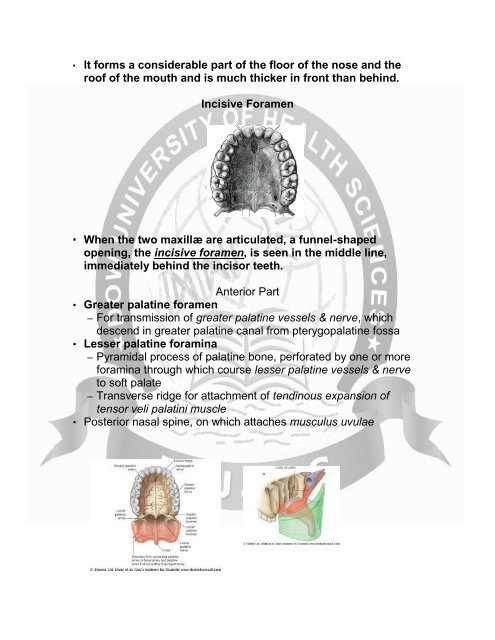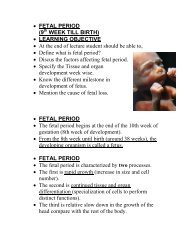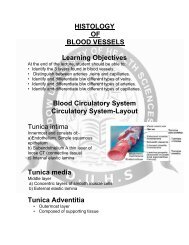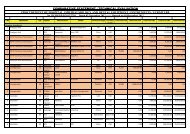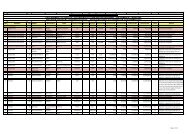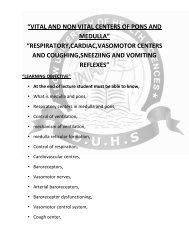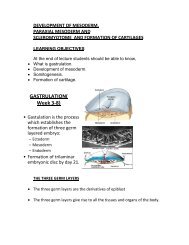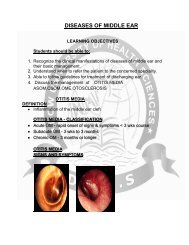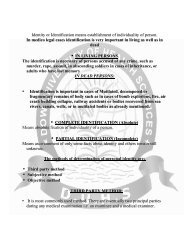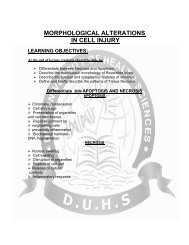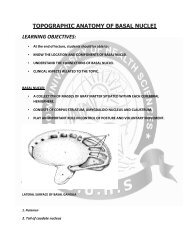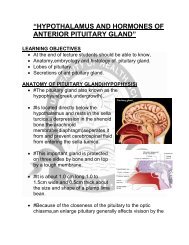Norma Basalis OBJECTIVES At the end of this lecture, students will ...
Norma Basalis OBJECTIVES At the end of this lecture, students will ...
Norma Basalis OBJECTIVES At the end of this lecture, students will ...
Create successful ePaper yourself
Turn your PDF publications into a flip-book with our unique Google optimized e-Paper software.
• It forms a considerable part <strong>of</strong> <strong>the</strong> floor <strong>of</strong> <strong>the</strong> nose and <strong>the</strong><br />
ro<strong>of</strong> <strong>of</strong> <strong>the</strong> mouth and is much thicker in front than behind.<br />
Incisive Foramen<br />
• When <strong>the</strong> two maxillæ are articulated, a funnel-shaped<br />
opening, <strong>the</strong> incisive foramen, is seen in <strong>the</strong> middle line,<br />
immediately behind <strong>the</strong> incisor teeth.<br />
Anterior Part<br />
• Greater palatine foramen<br />
– For transmission <strong>of</strong> greater palatine vessels & nerve, which<br />
desc<strong>end</strong> in greater palatine canal from pterygopalatine fossa<br />
• Lesser palatine foramina<br />
– Pyramidal process <strong>of</strong> palatine bone, perforated by one or more<br />
foramina through which course lesser palatine vessels & nerve<br />
to s<strong>of</strong>t palate<br />
– Transverse ridge for attachment <strong>of</strong> t<strong>end</strong>inous expansion <strong>of</strong><br />
tensor veli palatini muscle<br />
• Posterior nasal spine, on which attaches musculus uvulae


